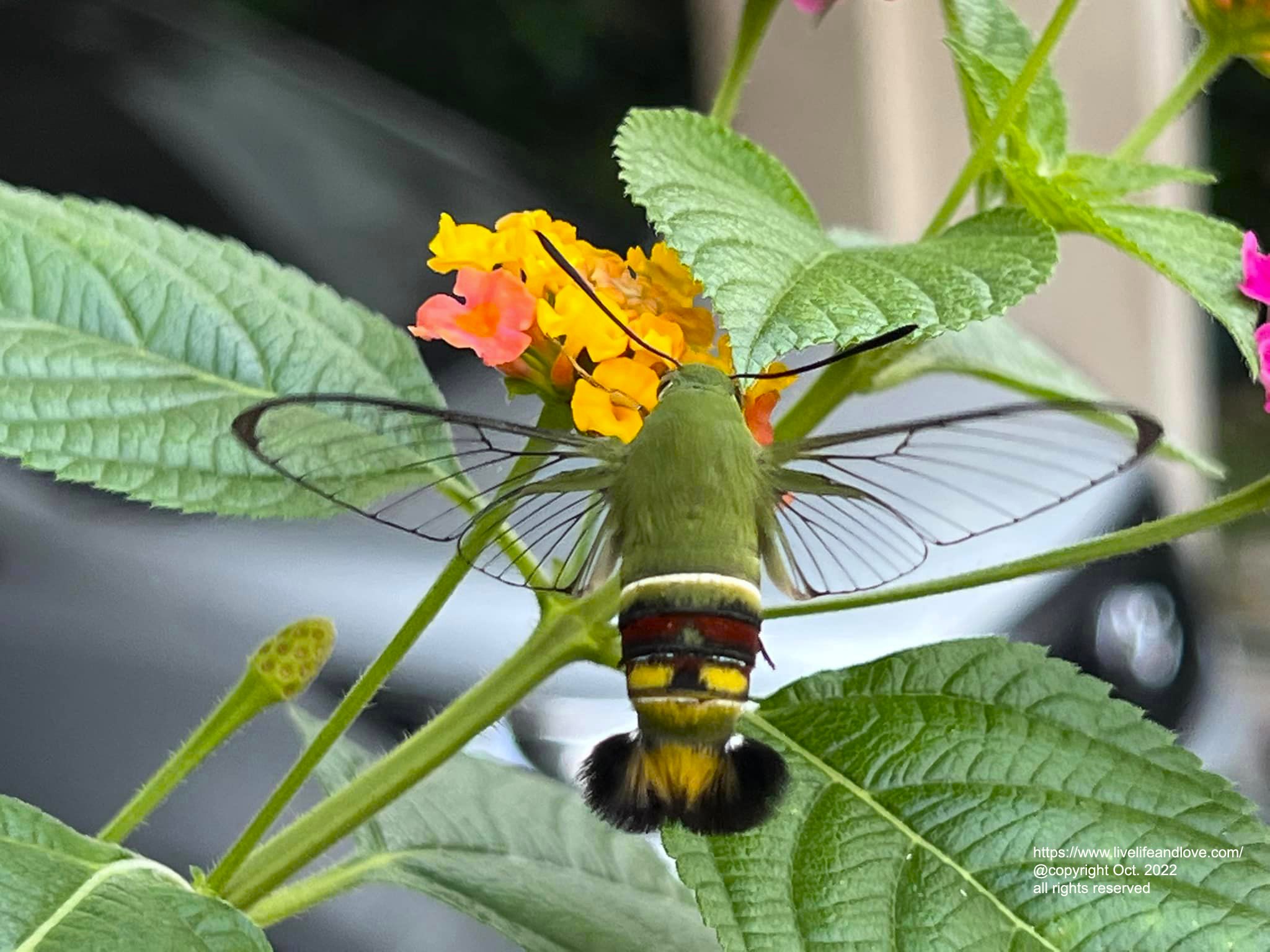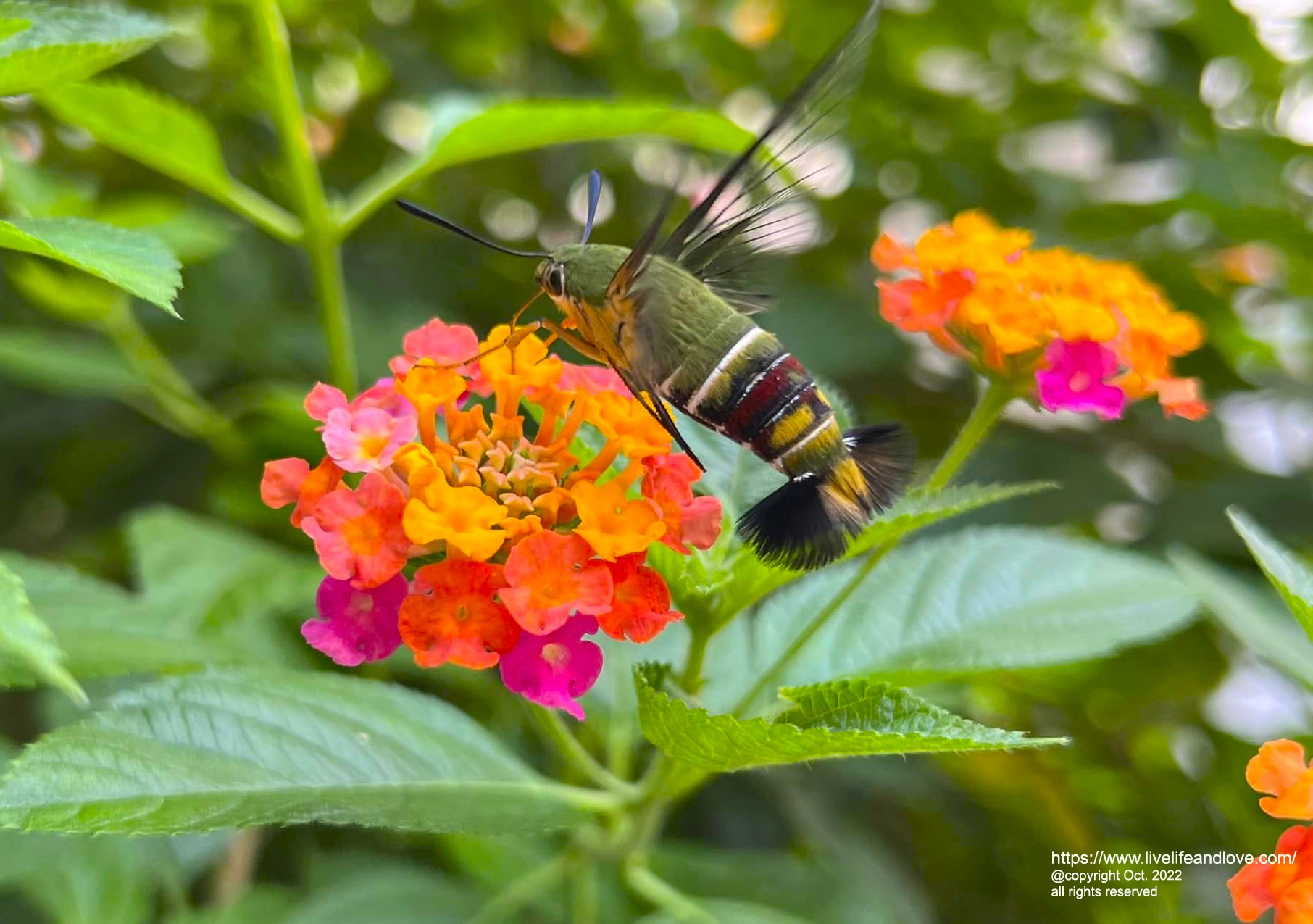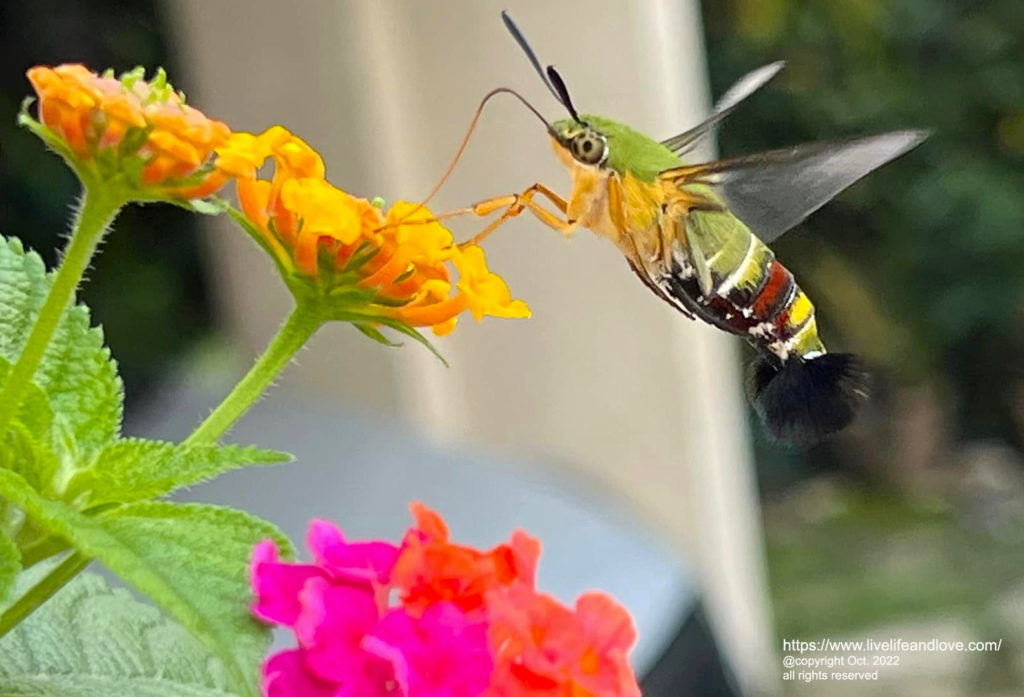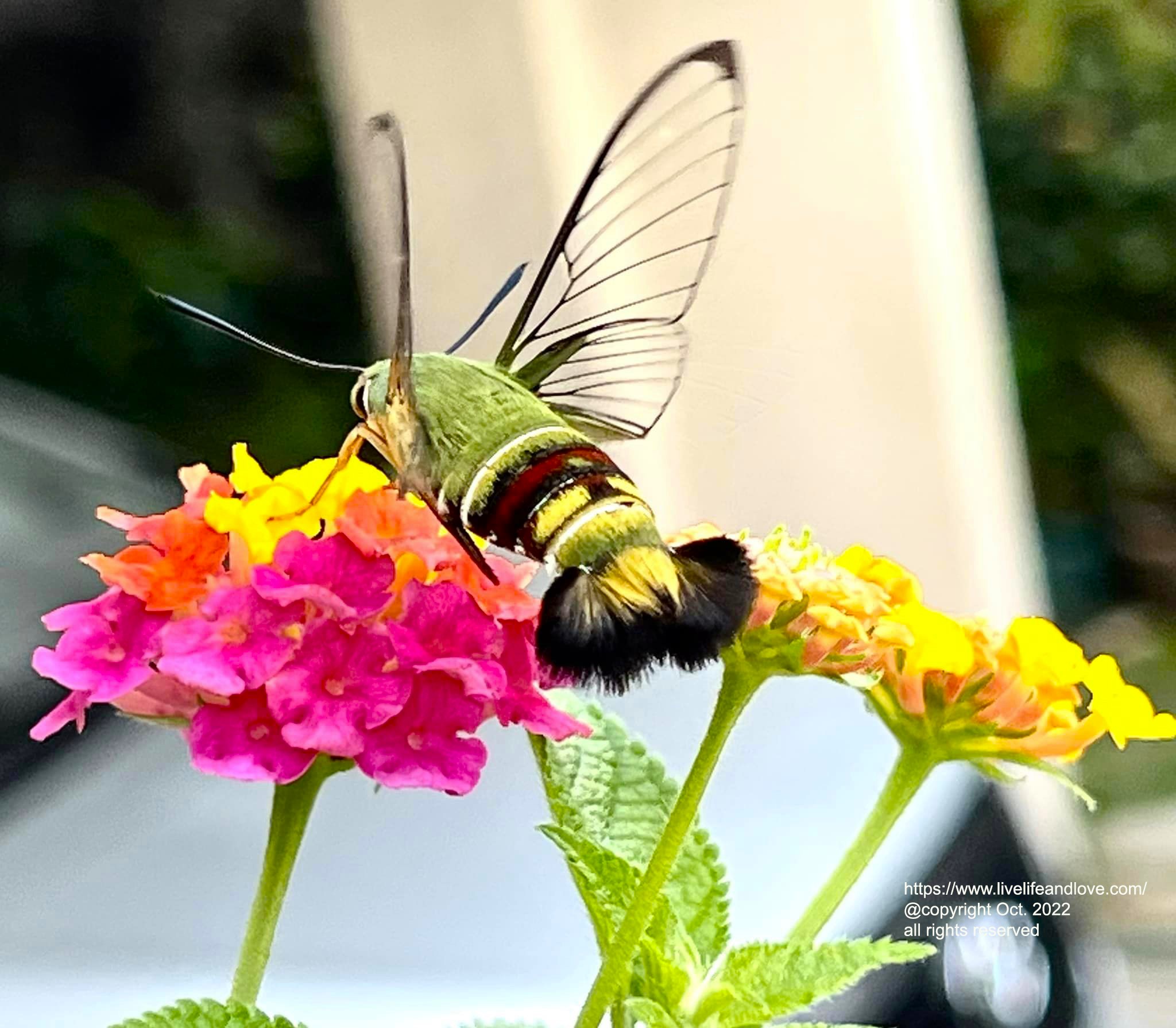Clearwing Hummingbird Olive green in color with a dark reddish-purple coloration on the back of the moth. A day-flying moth that is also one of the most fascinating guests that frequents the garden. A beautiful sunny day brings out the best in this helpful moth’s pollinating abilities. In addition to neither biting or stinging, they are regarded as being beneficial insects. The name denotes that it has clearwings, and the quick movement of its wings, often known as wingbeats, generates a humming sound.

Clearwing Hummingbird The moth tail has the appearance of a lobster’s tail because it extends out in the shape of a fan and is separated into two equal portions.

The Clearwing Hummingbird Moth, depicted in all of the photographs in this article, was hard at work pollinating flowers on the same day and at the same time.
Macro photography presents unique technical challenges, but by getting in close, you’ll see details you would have overlooked before. In a nutshell, these moths are works of art. I first mistook it for a baby hummingbird due to its ability to hover and its erratic flight pattern (backwards and sideways). It was challenging to find a secure footing in which to take photographs.

I was hesitant to photograph insects in direct sunlight due to contrast issues, and since they vanish in a matter of seconds, I had to work very rapidly to get even a handful of usable shots. In addition, I find that the light in the early morning or late afternoon is the softest and most pleasant for photography. These moths are only active during the midday hours, therefore this doesn’t work for them.

Insects like colorful butterflies, dragonflies, and honeybees are just some of the many that can be seen on my website. The vast majority of my photographs are unique or extremely unusual examples. It was pure luck that I was there at the correct time. There are many of nectar-producing flowers in our garden, making it a great site to catch butterflies and bees.
Thank you for reading my blog.

